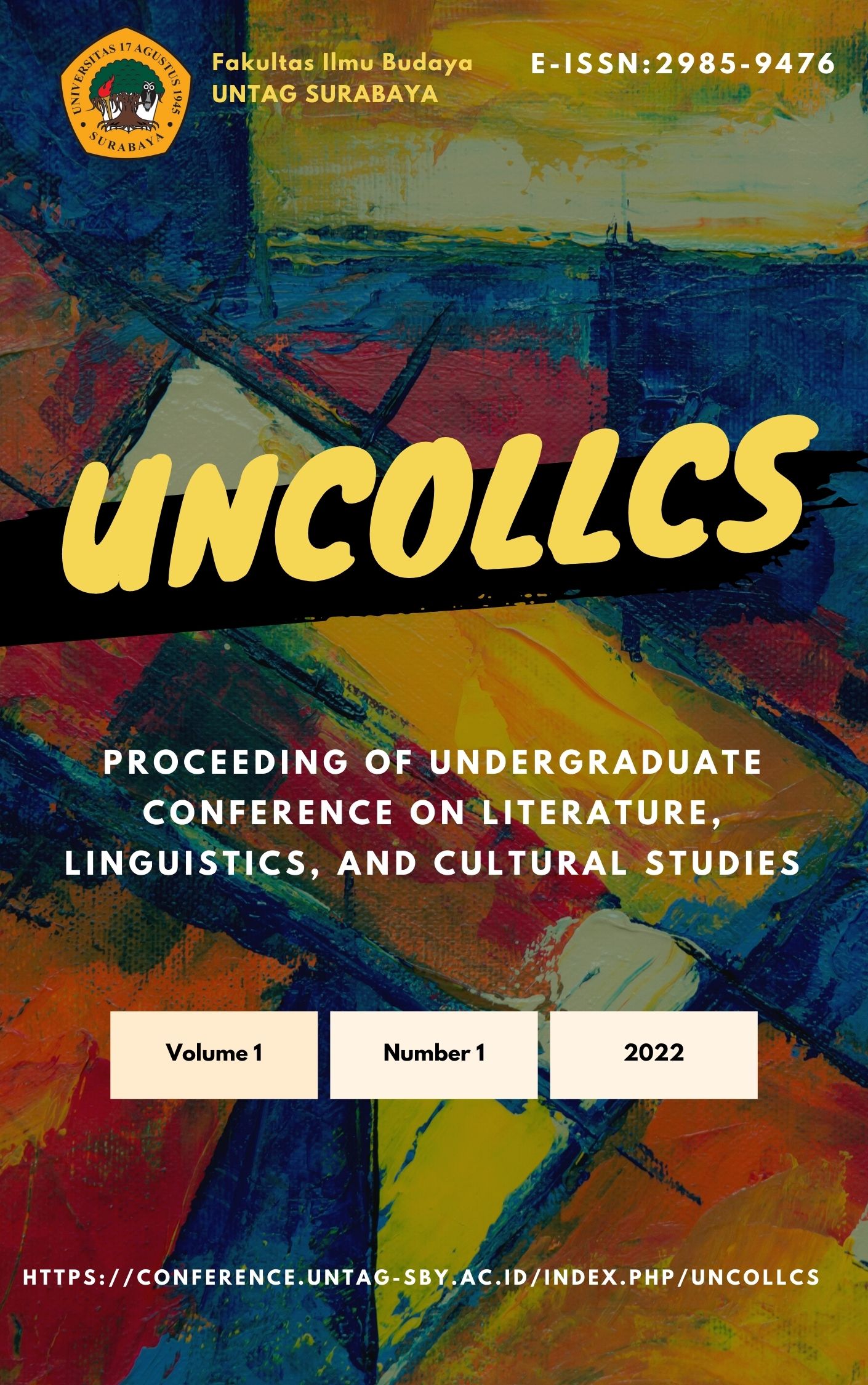ARCHETYPAL READING IN KATY PERRY’S SELECTED TEENAGE DREAM ALBUM SONGS
DOI:
https://doi.org/10.30996/uncollcs.v1i.1232Keywords:
archetype, Teenage Dream, Katy Perry, song lyrics, archetypal readingAbstract
This study aims to analyze the form of archetypes in the lyrics of the album song “Teenage Dream” by Katy Perry. In this research, the writer analyzes archetypes reflected in the album lyrics of Teenage Dream. In this research, the writer uses the descriptive qualitative method. The data taken are the archetypes used in the album Teenage Dream. The data source is taken from sources on the website in the form of lyrics of the song Last Friday Night (TGIF), Firework, Teenage Dream, California Gurls, Peacock, Circle The Drain, The One That Got Away, and Who Am I Living For?. It can be concluded that in Katy Perry’s songs there are several forms of archetypes that can be categorized. The meaning of archetypes is found in the song Teenage Dream by Katy Perry. Most of Katy Perry’s songs represent what really happens in life. Katy Perry uses figurative language and subconsciously in every song lyrics contain archetypes to express a feeling and wants to tell about the teenager’s life in this album. There are many archetypes reflected in every song’s lyrics, such as persona, anima/animus, self, shadow, the innocent youth, the caregiver, the jester, the ruler, the lover, and the magician
References
Adi Martinus, B., & Aisyah, N. N. (2021). THE STYLE OF LANGUAGE IN 5SOS SONGS: VOODOO DOLLS AND INVISIBLE. Anaphora: Journal of Language, Literary, and Cultural Studies, 3(2), 102-111. https://doi.org/10.30996/anaphora.v3i2.4636
Eckstein, Lars. (2010). Reading Song Lyrics. Amsterdam New York : Printed in The Netherlands
Jatmiko, D., & Marsih, L. (2016). PERSOALAN PSIKOLOGIS DAN REKONSTRUKSI MITOS DALAM CERITA FANTASTIK PADA KUMPULAN CERPEN BUMI KUNTILANAK KARYA DENNY HERDY. PARAFRASE : Jurnal Kajian Kebahasaan & Kesastraan, 15(02). https://doi.org/10.30996/parafrase.v15i02.572
Jung, Carl Gustav, et al. (1968). Man and His Symbols. New York: Dell Publishing
Jung, Carl Gustav. "The Archetypes and The Collective Unconscious (Collected Works of CG". Jung 9.Part 1 (1969): 470.
Jung, Carl Gustav. (1969). Archetypes And The Collective Unconscious. Princeton, NJ : Princeton University Press.
Jung, Carl Gustav, (1990). Psychology and Literature (Trans. by W.S.Dell and C. F. Baynes). From Modern Man in Search of a Soul. London : Routledge.
Jung, Carl Gustav, (1981). The archetypes and the collective unconscious. Routledge, 2014.
Lyric Teenage Dream © When I'm Rich You'll Be My Bitch, Prescription Songs, Bonnie Mckee Music, Where Da Kasz At?, Mxm Music Ab, Kasz Money Publishing, Songs Of Pulse Recordings, Songs Of Pulse Recording, Dtcm Blvd
Monte, F. Beneath (1877) The Mask. New York: Praegar Publishers, Print.
Nurhadi, M., & Marsih, L. (2022). STYLISTIC ANALYSIS OF EARLE BIRNEY’S THE BEAR ON THE DELHI ROAD. PARAFRASE : Jurnal Kajian Kebahasaan & Kesastraan, 22(1), 122-133. https://doi.org/10.30996/parafrase.v22i1.6632
Philipson, M.H., (1959), C.G. Jung’s Theory of Symbolism as a Contribution to Aesthetics, Diss. Columbia University.
Philipson, M.H., (1963), Outline of a Jungian Aesthetics.
West. M. L. (1999). Greek Lyric Poetry. Oxford World’s Classics. Oxford University Press.
Downloads
Published
How to Cite
Issue
Section
License
Copyright (c) 2022 UNCOLLCS: Proceeding Research on Literary, Linguistic, and Cultural Studies

This work is licensed under a Creative Commons Attribution-NonCommercial-ShareAlike 4.0 International License.










